Tide is one of those subjects that the more you learn about it, the more you realise you don’t know. As sea kayakers we don’t have to know every detail but a simplified understanding can help us to understand and predict what we might expect to see when we are out on the water.
Causes of Tide
To understand the tides is convenient to imagine the earth with an envelope of water all around it, spinning once every 24 hours on its north-south axis, with the moon on a line parallel to the equator.
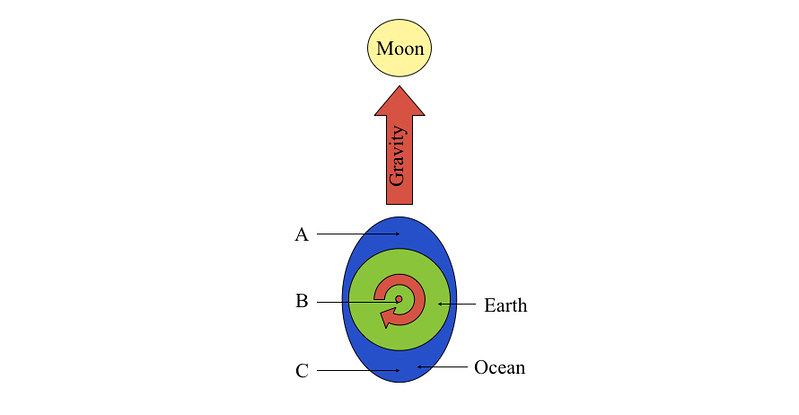
The tides are primarily caused by the gravitational attraction of the moon. Simplifying a bit, at point A the gravitational pull is the strongest causing a high tide, point B experiences a medium pull towards the moon, while point C has the weakest pull causing a second high tide. Because the earth spins once every 24 hours, at a given location on its surface there are aproximately two high tides and two low tides a day. Or more precicely, there are two tides a lunar day, which is 24 hours and 50 minutes. There are 6 hours and 12.5 minutes between high tide and low tide.
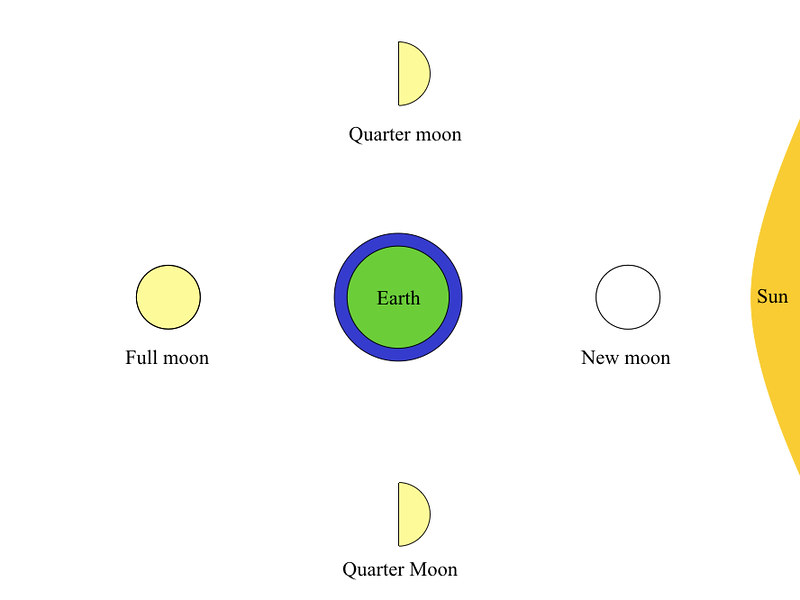
The moon orbits around the earth once every lunar month or 29.5 days. This changes the moons position in relation to the sun. You can tell where the moon is in relation to the sun by its phases; New moon, Quarter moon and Full moon.
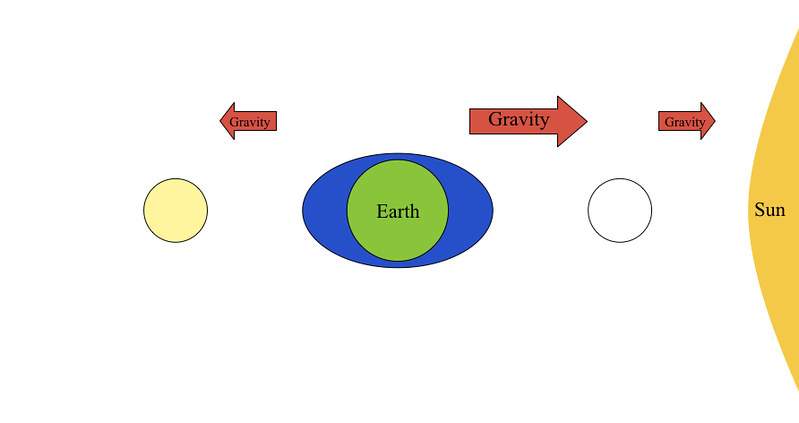
The sun has a similar but weaker gravitational effect on the tides. When the sun and moon are in line with each other both their forces work together to create bigger tides, called Spring tides. Spring tides have a higher High Water and a lower Low Water. This means they have a bigger range. (The word Spring has nothing to do with the season Spring. It is derived from an old Saxon word 'springan', effectively meaning big.)
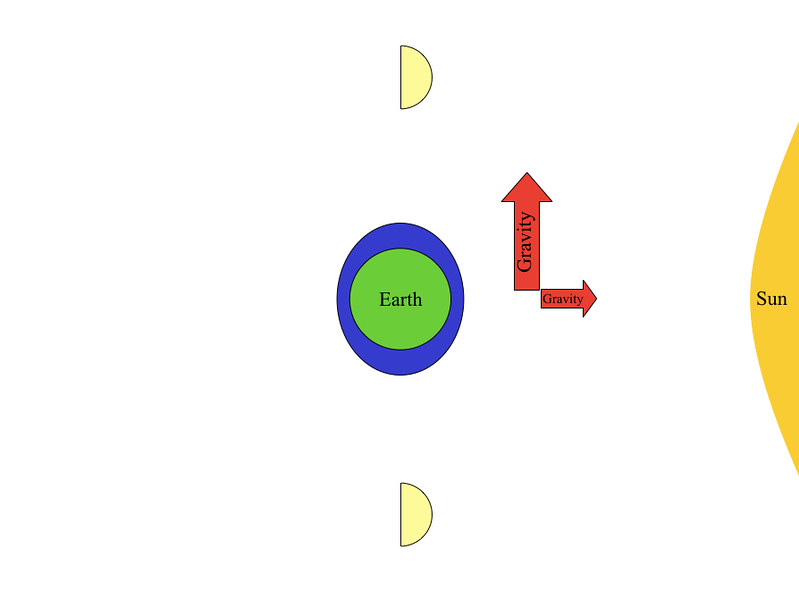
Neap tides occur when the sun and moon’s forces are at right angles to each other. They have a lower High Water and higher Low Water. This means they have a smaller range. There are two spring tides every lunar month and two neaps. There are approximately seven days between springs and neaps.
Rate of Vertical Movement
The following diagrams depict a dockside with a ladder with twelve rungs running up its side. Starting from Low Water we will look at the rate the tide rises over the approximately six hours till High Water.
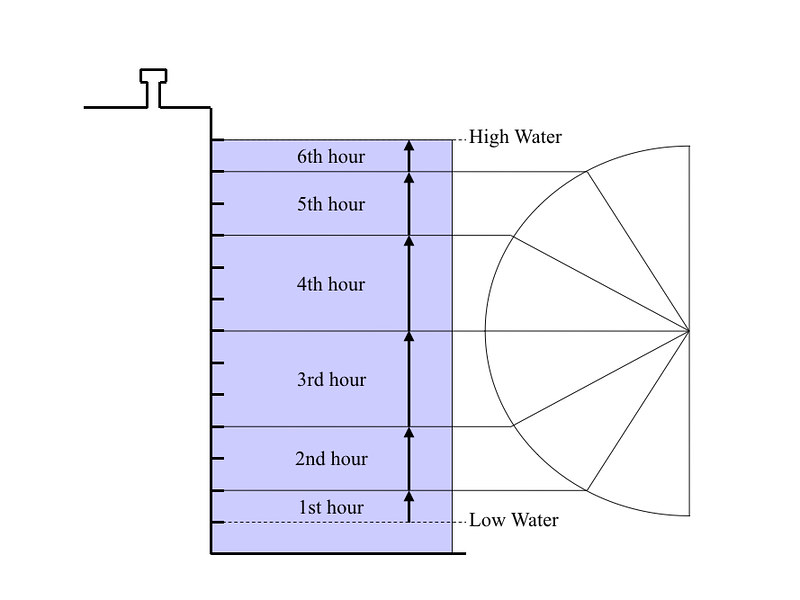
In the first hour the tide rises one twelfth of its overall range. In the second hour it rises two twelfths on top of the twelfth it has already risen. In the third and fourth hour, three twelfths, the fifth, two twelfths, and the sixth, one twelfth. The semi circle depicts the cyclical nature of this movement.
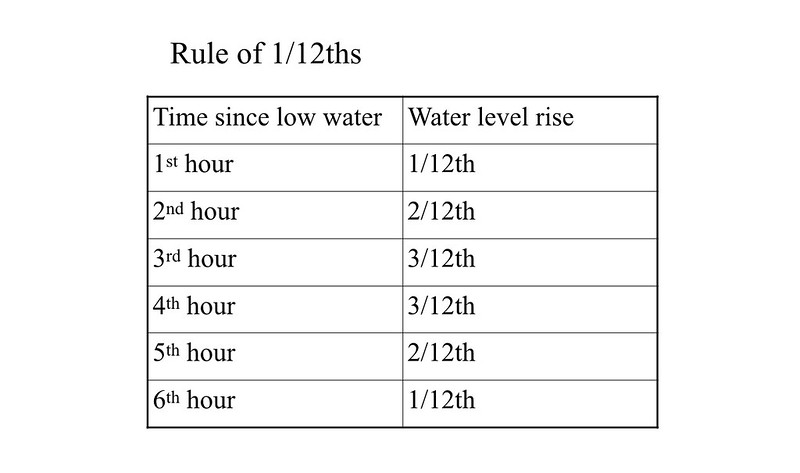
This is called the ‘Rule of Twelfths’. Once the tide reaches high tide it starts to drop in exactly the same way. This is a rule of thumb of the tide height.
Tidal Streams
When the moon causes a high tide, water has to flow towards the high tide location to make up the extra volume of water.
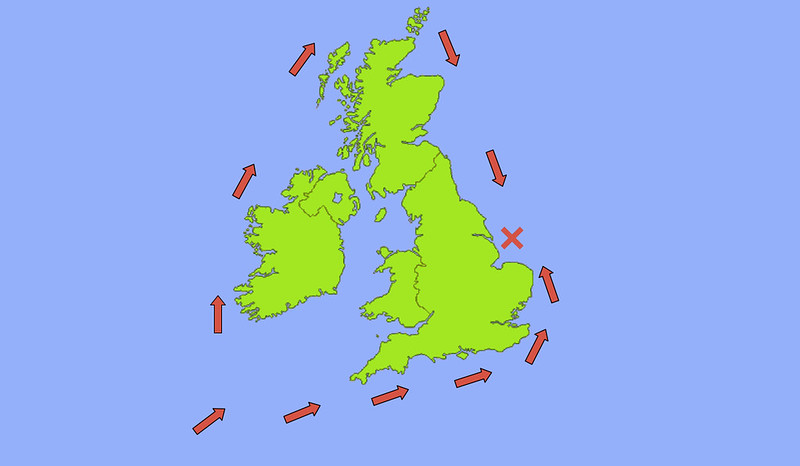
This diagram shows the direction the flood tide streams around the UK. The flood tide is the rising tide from low water to high water.
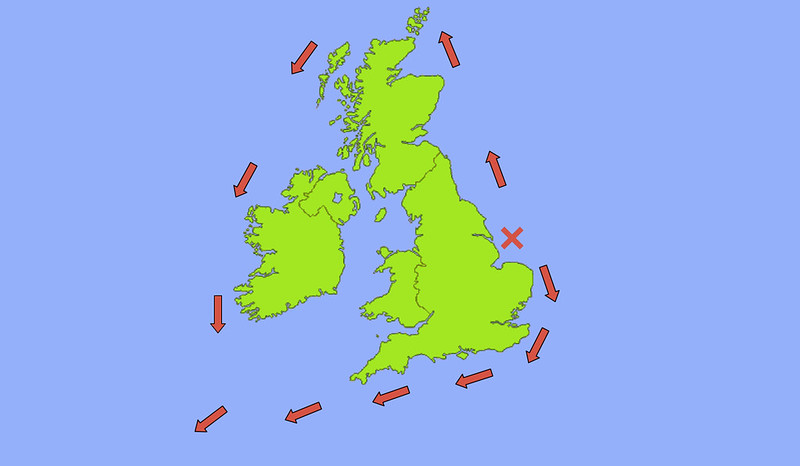
The ebb or dropping tide flows in the opposite direction. The time between the ebb and the flood and the flood and the ebb is called slack water. In the same way that the rate of vertical movement starts slowly and builds up, before slowing down, so does the speed of the flow. There are a couple of rules of thumb that help you predict this. The rule of thirds and the 50/90 rule.
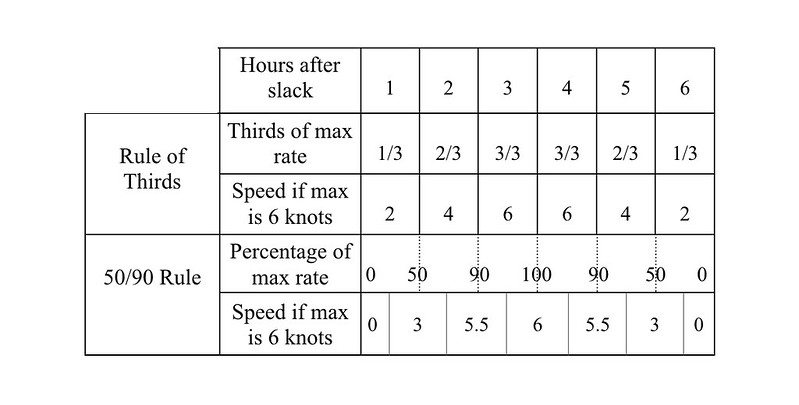
Which every you prefer to use is fine. They are essentially telling you the same thing.
Tide Races and Overfalls
When the tide flows along the coast and comes across an obstacle that constricts its flow it speeds up as it goes around or over the obstacle.
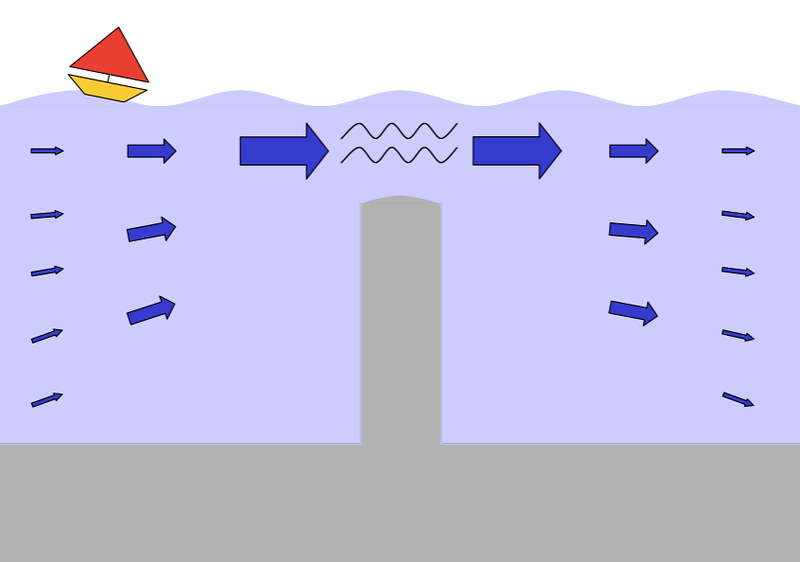
If it goes over the obstacle it is called an overfall. The fast flowing water can potentially form rough water if combined with waves. These areas are marked with a pair of wavey lines on a nautical chart.
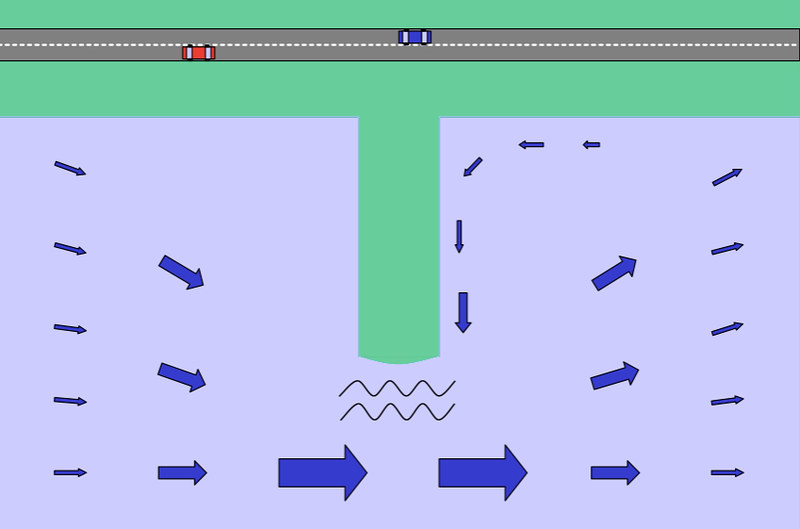
If it goes around the obstacle it is called a tide race. In practice a tidal race is often also an overfall as the sea bed around a headland or island tends to be shallow. An eddy (area of still water) or back eddy (area of water flowing against the main flow) will often form behind the obstacle.

By Philip Clegg
With over two decades of working in the sea kayaking industry, Phil can be found on a daily basis coaching for Sea Kayaking Anglesey. That's when he's not expeditioning, playing or putting kit to the test.


